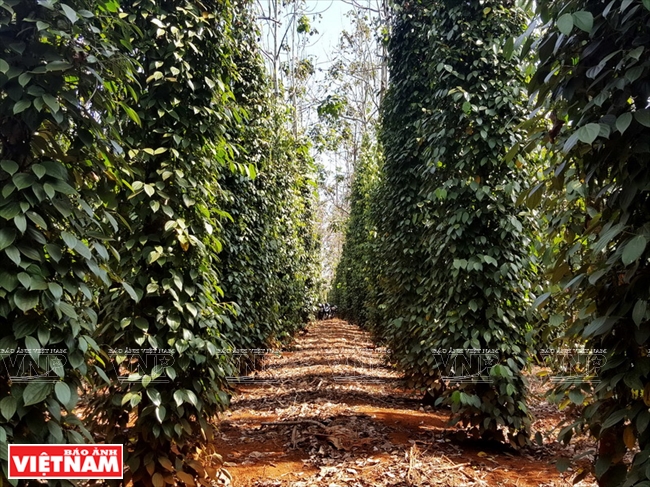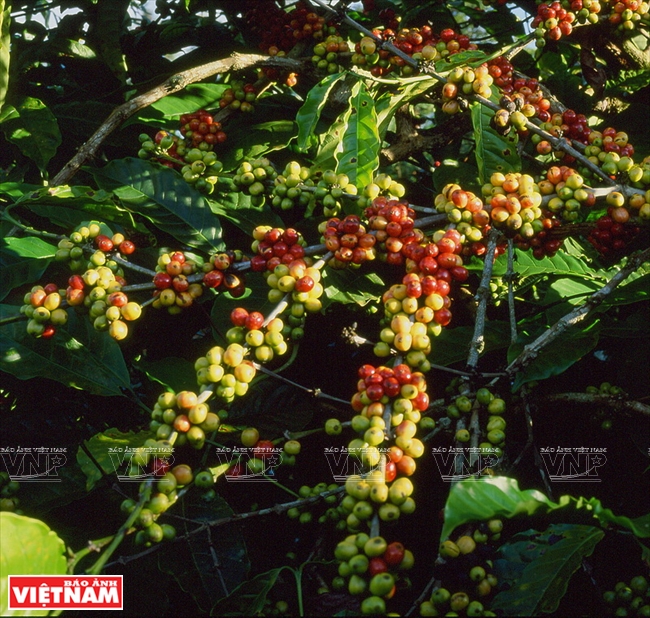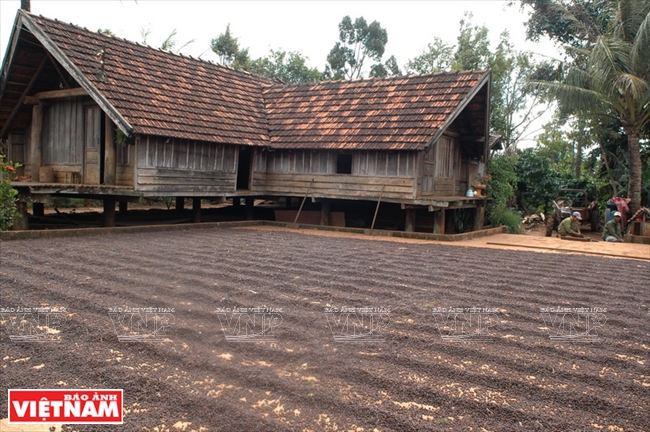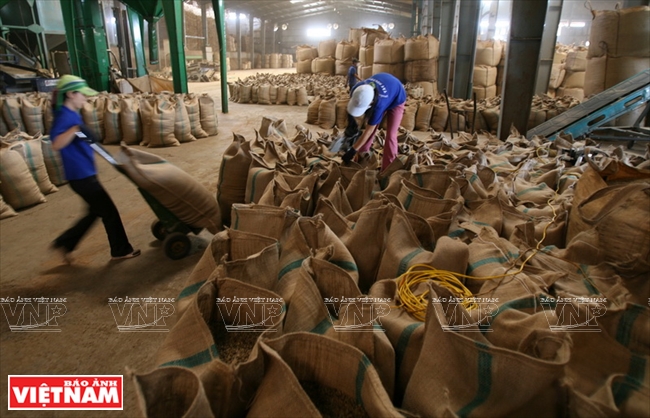With its agricultural mainstays, such as coffee, rubber, peppers, vegetables and fruit, which annually bring about a total export value of billions of US dollars, Tay Nguyen (the Central Highlands) becomes one of the largest suppliers of agricultural commodities in the country.
Establishing Concentrated Areas
The region’s temperate climate and red basalt soil are very suitable for growing different varieties of plants, especially long-term industrial and annual plants. The Central Highlands provinces have established large-scale areas specialising in the cultivation of coffee, peppers, rubber, cashews, tea, cross-bred corn and cassavas.
Over the years, the region’s coffee, one of the key agricultural products, has affirmed its position in the world, helping Vietnam rank second in the word in coffee production and export, and first in Robusta coffee production and export. At present, coffee is grown on 576,800ha, accounting for nearly 90% of coffee plantations nationwide. The total coffee area for harvest is 548,533ha.

Over 71,000ha of pepper plants are grown in the region, generating more than 120,877tonnes of peppercorns yearly. Photo: VNA
Coffee beans in the harvest season. Photo: VNA's file

Harvesting coffee at a farm of Thai Hoa Company. Photo: VNP’s file |
In the 2016-2017 crop, despite harsh weather with a long lasting drought, the region’s yield was 1.3 million tonnes of beans, which is 93.3% of the country’s total. The productivity of Robusta coffee reached 2.5tonnes/ha, three times that of the rest of the world.
Besides coffee, the region has a total area of 251,348ha for rubber trees, including 139,115ha for harvesting with a total annual latex productivity of at least 192,207tonnes, accounting for 27% and 18% of the country’s total area and productivity, respectively.
The region has 71,000ha of peppers with a total annual output of at least 120,877tonnes and 74,000ha of cashew with an average productivity of 67,276tonnes.
With sound policies on planning for areas of cultivating key plants, the agricultural sector has contributed to promoting the region’s socio-economic development and improving the living standards of ethnic groups.
“Bottlenecks” Need to be Removed Quickly
Despite many notable achievements, the region still faces many challenges and limitations. According to evaluations from experts at a workshop held recently in Buon Ma Thuot, the infrastructure and agricultural services in the region have not met the real demand and no change has been seen in plant structure. There are many “bottlenecks”, such as land for production, investment, high-quality labour resources and the participation of only a few scientists, investors and agricultural producers.
To overcome the above obstacles, Minister of Public Security/Head of the Tay Nguyen Steering Committee To Lam suggested the committee, the Ministry of Agriculture and Rural Development, the Ministry of Planning and Investment, the Ministry of Science and Technology, banks and provinces in the Central Highlands setting up programmes to support and give out priorities to establish some models of high-tech agricultural production. Enterprises will be the core to bring the region’s key agricultural products to participate in the domestic and global value chains. It should also promote programmes on general research and developing agriculture in terms of management science, policy, mechanism, market, technique and technology, planning production areas towards building an organic agriculture in the Central Highlands.

Drying coffee beans on a yard of a family in Tay Nguyen. Photo: VNP’s file

\
Packing coffee for export at a coffee processing and exporting company in the Central Highlands. Photo: VNP’s file

A coffee inventory corner at the Central Highlands Coffee Investment & Export Company. Photo: VNP’s file
|
The state should adjust mechanismsand makee policies, suitable to the reality of production, especially the policies on land, investment and credit for agricultural development. It should encourage domestic and foreign economic sectors to invest and develop a mixture of processing agricultural products, such as coffee, rubber, peppers, cashews and cassavas to increase the value as well as the competitiveness of products in the world.
He also asked relevant ministries and sectors to support the provinces in the Central Highlands to set up projects on preserving rare varieties, centres for plants and animals and training people to meet the demand for sustainable development of agricultural production areas in the region.
The region has a total area of 251,348ha for rubber trees, including 139,115ha for harvesting with a total annual latex productivity of at least 192,207tonnes, accounting for 27% and 18% of the country’s total area and productivity respectively.…
|
Story: Quang Huy/VNA Photos: VNP’s files